Speak up for Wolves: Sign the Petition!
 The Mexican gray wolf, or lobo, is one of the most endangered carnivores in the world. After lobos were nearly wiped out, reintroduction began in 1998 in remote areas of New Mexico and Arizona. Since then, recovery has been slow and turbulent. In 2015, the U.S. Fish and Wildlife Service (USFWS) decided that the only wild population of Mexican gray wolves in the U.S. was not essential to the recovery of Mexican gray wolves as a species. Guardians and our allies sued, and in 2018, a U.S. district judge told USFWS to go back to the drawing board to write a new management rule for the lobo. The U.S. Fish and Wildlife Service is currently seeking comments on that new Mexican wolf management rule. This is our last chance to make sure the agency gets recovery right, so please submit your comment!
The Mexican gray wolf, or lobo, is one of the most endangered carnivores in the world. After lobos were nearly wiped out, reintroduction began in 1998 in remote areas of New Mexico and Arizona. Since then, recovery has been slow and turbulent. In 2015, the U.S. Fish and Wildlife Service (USFWS) decided that the only wild population of Mexican gray wolves in the U.S. was not essential to the recovery of Mexican gray wolves as a species. Guardians and our allies sued, and in 2018, a U.S. district judge told USFWS to go back to the drawing board to write a new management rule for the lobo. The U.S. Fish and Wildlife Service is currently seeking comments on that new Mexican wolf management rule. This is our last chance to make sure the agency gets recovery right, so please submit your comment!
Tweet for Lobos!
We’ve assembled eight ready-to-go tweets, complete with inspiring images and a link to the petition. All you have to do is “grab-n-go” to help raise awareness and make a big difference in the defense of the lobos! P.S. These work great on Facebook, too!
Tweet #1
#Wolves keep the Gila wild! Celebrate the 97th anniversary of the Gila Wilderness in New Mexico by urging the U.S. Fish and Wildlife Service to protect the Gila’s most iconic resident—the critically endangered Mexican #wolf: https://guardiansaction.org/lobos #KeepItWild #StopExtinction
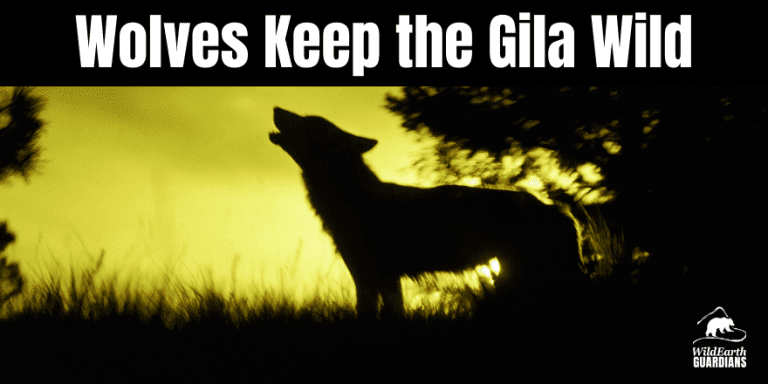
Tweet #2
Lobos are essential! Mexican gray #wolves are critical ecosystem influencers in the desert Southwest. They keep prey populations healthy and in balance, protect riparian and aquatic resources, and indicate the health of entire ecosystems. Take action: https://guardiansaction.org/lobos
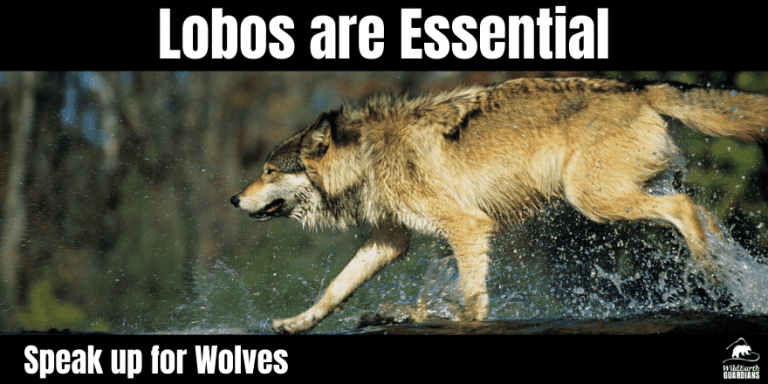
Tweet #3
Humans are the largest obstacle to recovering Mexican #wolves. Along with illegal trapping, poaching and vehicular mortalities, politically motivated ‘recovery’ plans have put lobos in a precarious position. Take action to help get #wolf recovery right: https://guardiansaction.org/lobos
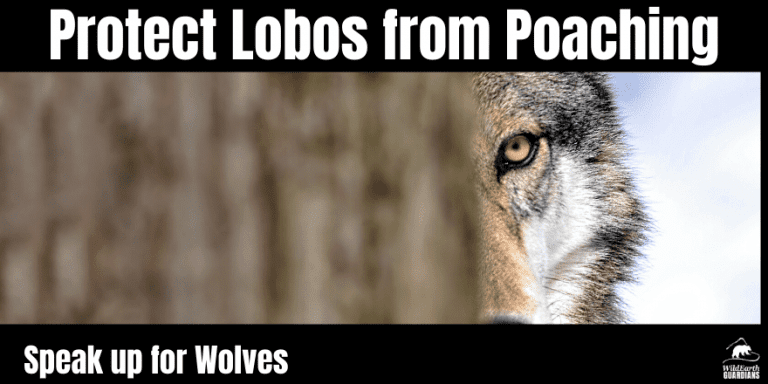
Tweet #4
Real recovery for Mexican #wolves would include three distinct, but connected populations. Along with lobos‘ current range in the Greater Gila Bioregion, the Grand Canyon area and the Southern Rockies are identified as prime habitat. Help make it happen: https://guardiansaction.org/lobos
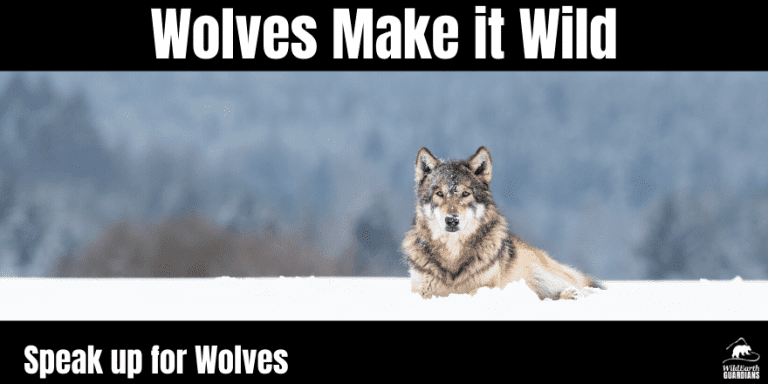
Tweet #5
Mexican #wolves in the wild are, on average, as related as brothers and sisters. Though lobos numbers are slowly increasing, the greatest indicator of a successful #wolf recovery effort is the genetic health of the wild population. Support real recovery: https://guardiansaction.org/lobos
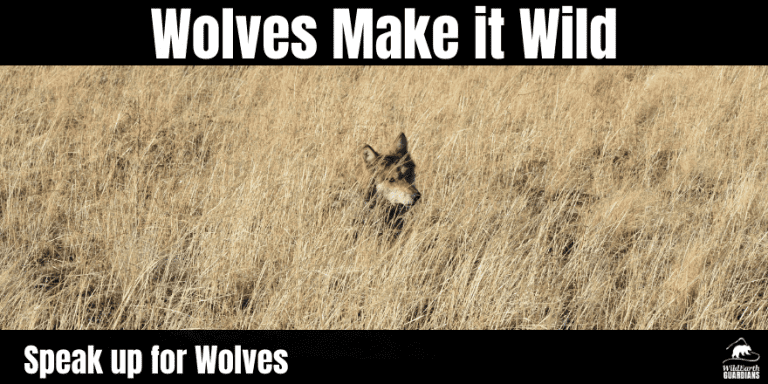
Tweet #6
To truly recover Mexican gray #wolves a new management rule should be based on the best available science and prioritize enhancing the genetic diversity of the wild lobo population. Raise your voice to make sure Mexican #wolf recovery is done right: https://guardiansaction.org/lobos
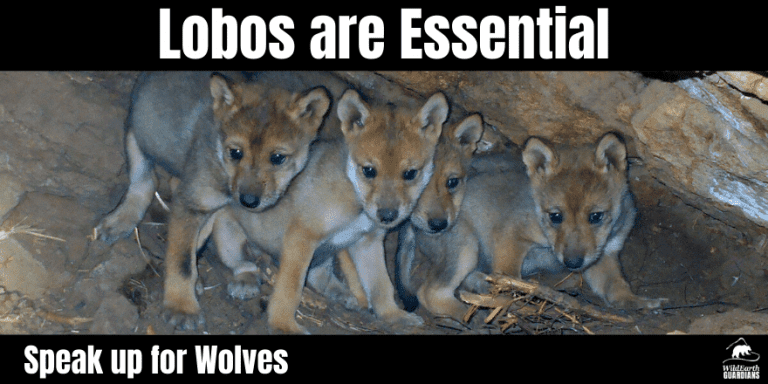
Tweet #7
Did you know that the Mexican gray wolf, or lobo, is the most endangered gray #wolf in North America and one of the most endangered carnivores in the world? Tell the @USFWS we need a new management rule that will actually recover Mexican #wolves: https://guardiansaction.org/lobos
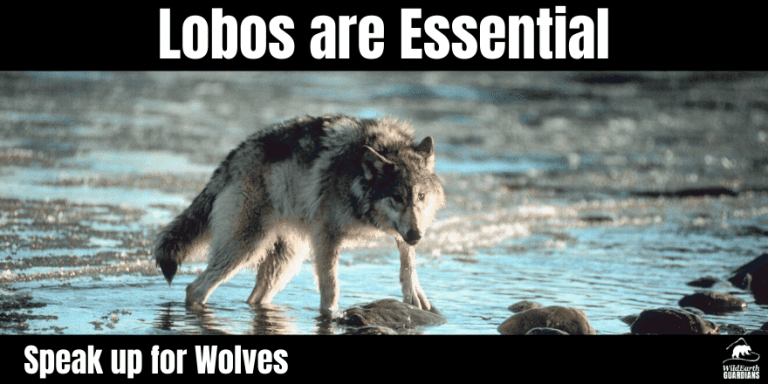
Tweet #8
Almost a century after Aldo Leopold shot a Mexican #wolf in the Gila, only 186 of these wolves exist in the wild. The fierce green fire he saw in the wolf’s eyes still flickers in the #wolves who roam the Greater Gila today. Help support full recovery: https://guardiansaction.org/lobos
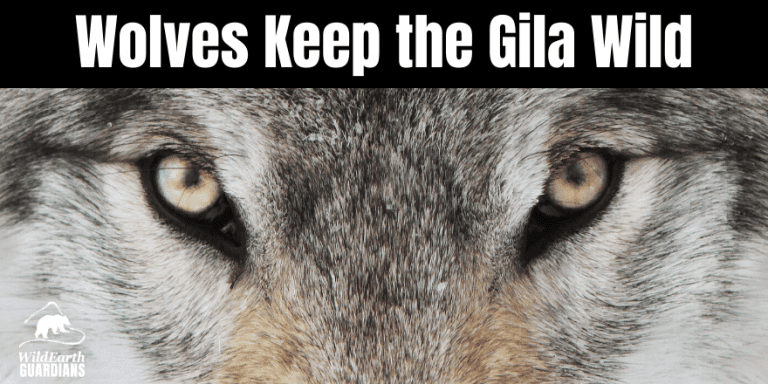
Amplify YOUR Voice for Wolves: Write a Letter to the Editor
Letters to the editor (LTE) are a great way to share your perspective and encourage others to speak up for lobos. It’s easy, fast, and effective—all you have to do is write your short perspective on why wolves deserve more protections and why the southwest needs more wolves. Be sure to mention that U.S. Fish and Wildlife is taking public comments on wolf management right now and comments can be submitted here: https://guardiansaction.org/lobos
You can submit your letter to your local outlet, or if you are not from the region, submit it to a statewide outlet. Here are direct links to submission forms, note that different papers have different word count limits.
New Mexico
- Albuquerque Journal
- Santa Fe New Mexican
- Las Cruces Sun-News
- Silver City Daily Press
- Silver City Sun-News
- El Defensor-Chieftain (Socorro, NM)
- Sierra County Sentinel (Sierra County, NM)
Arizona
- Arizona Daily Star
- Arizona Republic (Tucson area)
- East Valley Tribune (Phoenix area)
- Arizona Daily Sun (Flagstaff area)
- White Mountain Independent (White Mountain area – closest to wolf country)
- Pinal Central (Casa Grande area)
- Daily Courier (Prescott area)
LTE Talking Points: Here are key elements of a new lobo management rule that will help truly recover and restore Mexican wolves to their historic range. Please use these talking points as a guideline for drafting your individual LTE, but what’s most important is that your voice and your reason for wanting lobo recovery come through. So, please speak in your own words, but make sure to emphasis the fact that a new Mexican wolf management rule must:
Rescue Mexican wolves from a genetic bottleneck
- A real genetic rescue entails releasing adult wolf pairs with pups until the wild population of lobos demonstrates adequate genetic diversity improvements. Releasing a set, limited number of wolves into the wild is not a real genetic objective—very few wolves who reach breeding age actually contribute their genes to the wild population.
Allow lobos to roam throughout their historic range
- Preventing wolves from crossing arbitrary political boundaries like Interstate 40 is unacceptable. In order to truly recover, Mexican wolves need access to suitable habitat in the southern Rockies and the Grand Canyon region.
Designate lobos as “essential”
- U.S. Fish and Wildlife Service has designated the only wild population of Mexican wolves in the U.S. as “non-essential” to the recovery of the species in the wild. Designating this population as “essential” is common sense and crucial to recovery.
Reduce wolf-livestock conflict
- Wolves are native carnivores highly adapted to the desert southwest. They should not bear the burden of livestock-wildlife conflict when non-native cows are grazing on public lands without protection.
